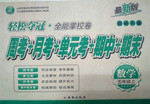题目内容
A man and his wife arrived in Boston by train. After getting off the train, they walked without an __1__ into the outer office of Harvard’s president. So they were stopped by his secretary and kept __2__. For hours, the secretary took no notice of them, __3__ that the couple would finally become disappointed and __4__. But they didn’t. The secretary finally decided to disturb the president, though __5__.
A few minutes later, the president walked towards the couple with a _6__ face. The lady told him, “We had a son that __7__ at Harvard for one year. He loved Harvard. He was __8__ here. But about a year ago, he was accidentally killed. My husband and I would like to __9__ a memorial to him, somewhere on campus.”
The president wasn’t moved. Instead, he was __10__. “Madam,” he said, “ we can’t put up a statue for every person who studied at Harvard and died. If we did, this place would look like a __11__.” “Oh, no,” the lady __12__ quickly. We don’t want to put up a statue. We would like to give a __13__ to Harvard.” The president rolled his eyes and __14__ at the couple and then exclaimed, “ A building! Do you have any __15__ how much a building costs? We have spent
over $ 7,500,000 on the campus building at Harvard.” For a moment the lady was silent. The president was __16__ , because he could get rid of them now. Then the lady turned to her husband and said quietly, “Is that all it costs to start a __17__? Why don’t we just start our own?” Her husband nodded. __18__ their offer was turned down, Mr. and Mrs. Stanford traveled to California where they founded Stanford University __19__ after them, a memorial to a son that Harvard no longer __20__ about.
1. A. choice B. decision C. acquaintance D. appointment
2. A. waiting B. standing C. sitting D. talking
3. A. hoping B. finding C. realizing D. imagining
4. A. go down B. go out C. go away D. go around
5. A. hopelessly B. carefully C. unexpectedly D. unwillingly
6. A. funny B. cold C. sad D. pleasant
7. A. visited B. studied C. served D. attended
8. A. brave B. proud C. happy D. clever
9. A. set up B. set down C. set off D. set about
10. A. excited B. shocked C. ashamed D. satisfied
11. A. cemetery B. garden C. museum D. park
12. A. expressed B. refused C. admitted D. explained
13. A. yard B. playground C. square D. building
14. A. shouted B. glanced C. called D. laughed
15. A. idea B. thought C. opinion D. suggestion
16. A. astonished B. interested C. pleased D. bored
17. A. university B. business C. club D. department
18. A. While B. Since C. Though D. Once
19. A. looked B. taken C. followed D. named
20. A. knew B. heard C. cared D. talked
DAACD BBCAB ADDBA CABDC

 轻松夺冠全能掌控卷系列答案
轻松夺冠全能掌控卷系列答案They say that "seeing is believing", but when it comes to TV commercials, this is not always the case.
The world's leading mobile phone maker, Nokia, released its latest model Lumia 920 on Sept. 5. The smart phone was supposed to possess an advanced camera, which let customers shoot better pictures at night and record stabilized videos. To show how well these features work, the Finnish company released an ad showing a man and a woman riding bicycles side by side, with the man taking a video of the woman on the phone. However, several hours later, technology website The Verge uncovered that the video was neither shot with the new product, nor shot from someone riding a bicycle. Instead, someone in a lorry next to the woman took the video using a professional video camera.
The next day Nokia apologized, "In an effort to demonstrate the benefits of visual image stabilization, we produced a video that simulates(看起来像)what we will be able to deliver." Indeed, what we have seen in ads is more or less a simulation——a practice called "advertising photography".
McDonald's video in June explained the "art". It showed how its burgers get dolled up(装扮)before going on camera. Like models preparing for a magazine cover shoot, burgers also get designed in a photography studio. They are prepared for hours and put together with absolute precision so they look their best before photo shoots. Each ingredient, such as onions and sauce, is carefully put into place to make the burger look much juicier, bigger and tastier. Computer software Photoshop is also used to add visual effects.
So don't feel ____________________when you get a burger that never looks like what you see in ads.
1. What do the underlined words "the case" in Paragraph l refer to? (within 5 words)
2. For what purpose did Nokia create the video? (within 8 words)
3.Why did Nokia apologize based on the text? (within 10 words)
4.Why does the author give the example of McDonald's video in Paragraph 4? (within 10 words)
5.Fill in the blank in Paragraph 5 with proper words.(within 2 words)